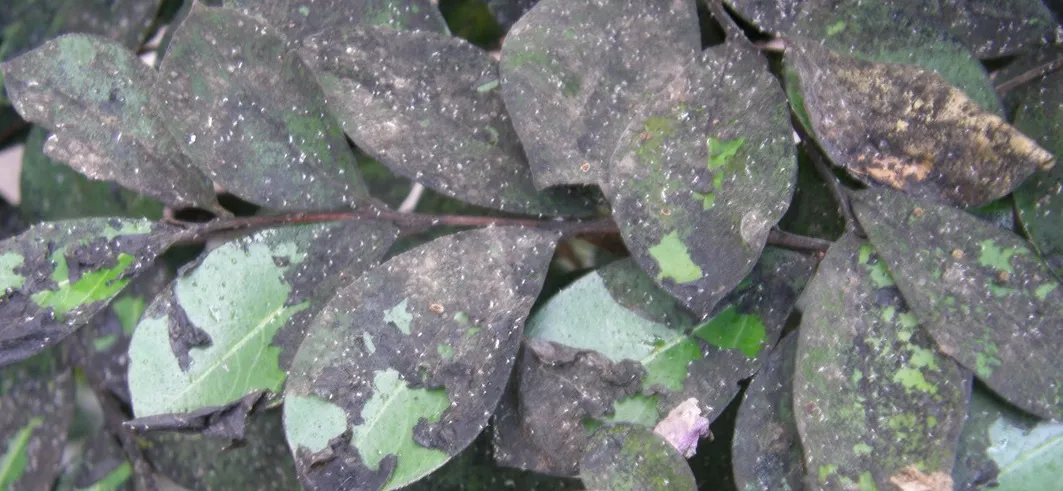When and where is this pest the most prevalent?
Aphids are prevalent on Crape Myrtles anytime they have leaves - which for our Gainesville lawns is from April through October. Typically, their remnants (the black sooty mold) is not seen until late summer, though. Aphids also attack other trees and shrubs in Gainesville yards as well.
How can I identify this as the problem in my lawn or landscape?
The quickest way to know if your Crape Myrtles have aphids is to see a black fungus looking substance covering the leaves. This substance is the excretion from the aphids, which dirt in the air sticks to and becomes black. It really isn’t a mold at all - it’s just a lawn insect infestation (Aphid, white fly, or scale) leaving their mark in your yard.
You may also notice a lot of ants and wasps around your crape myrtle, as these will feed on the aphids if the infestation is large enough to attract them.
How does it occur and how can I prevent it?
Aphids are like most other insects in that they go after unhealthy trees. Whether they’re drought stressed, rootbound, or in too much shade - Aphid infestations regularly are a symptom of a larger problem.
What can I do to resolve the issue?
The only natural way to rid your Crape Myrtles of aphids is to release ladybugs around the affected crapes. These ladybugs are what’s known as a ‘beneficial insect,’ because they protect the plant by feeding on the aphids that are damaging it. Here’s a photo of them feeding:
The other way to resolve them is treating with a mixture of dish soap and water every couple days for several weeks. This is a slow process, but it’s faster than the ladybugs.
The third option is allowing our lawn insect control professionals spray the lawn. If you need lawn and ornamental pest control, please call our office at (352) 378-5296.


